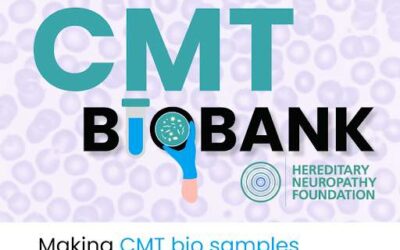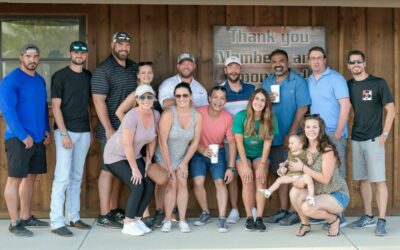CMT6 presents with the typical symptoms of CMT (leg, feet and hand deformities, muscle weakness, atrophy, sensory loss, and foot drop), but often patients experience blindness and cognitive impairment.
HNF Research Initiatives
FDA Repurpose Drugs
In September 2021, HNF partnered with Rarebase, a public benefit company that leverages cutting-edge technology (Function, a tech-enabled drug discovery platform) and biology using FDA-approved drugs to deliver accelerated, off-label treatments for CMT1A. HNF has completed Phase I of the project.
Novel Disease Modifying Drugs
University of Helsinki
The Battersby Lab receives support from HNF to gain a better understanding of the ….. and to develop an effective treatment approach for MTRFR or C12orf65 deficiency. Brendan Battersby, PhD is working closely with Jax Lab under the direction of Robert Burgess, PhD to develop a mouse model to test a gene therapy. The AAV9 therapy was developed by HNF in collaboration with Steven Gray, Phd. Rita Horvath, MD, PhD from Cambridge is the clinical advisor on the research team.
The goal is to develop an effective treatment approach for C12orf65 deficiency that could be extended to other human mitochondrial diseases, which affect an estimated one in 5000 people worldwide. This would mark a significant breakthrough in the hunt for treatments and cures for inherited mitochondrial diseases.
University of Miami
The Saporta CMT Stem Cell Laboratory is a state-of-the-art facility working to develop iPSc’s for MTRFR/C12orf65. These iPSc’s will support both the gene therapy and repurpose drug programs.
Natural History Studies
CMT&Me App
A smartphone digital study sponsored by Pharnext Pharmaceuticals in collaboration with HNF, other CMT advocacy groups and experts in six countries to collect real-world anonymised data from adults (≥18 years) living with CMT. The aggregated data is available in close to real time, via dashboards and is analyzed based on pre-set criteria (ie. diseases stage, daily symptoms, age, demographics) to understand the real-world impact of CMT and the unmet needs of patients.
The Global Registry for Inherited Neuropathies (GRIN)
Developed in 2013 to stratify large groups of patients for all types of CMT to gain a deeper understanding of CMT. This important data also allows HNF to better identify the burden, diagnostic journey, and prevalence of CMT that will aid TRIAD research partners. Patient data = Improved Research & Clinical Trial Design.
If you don’t know your CMT type, you can find out from the HNF through The CMT Genie Program.
www.cmtgenie.orgFaces of CMT
Jaxson’s Clayshoot for Mito CMTs
Jaxson’s Clayshoot for Mito CMTs Among the various forms of CMT, mitochondrial CMT (Mito-CMT) represents a particularly challenging subset, where genetic mutations impact the mitochondria—often referred to as the powerhouse of the cell. For those living with Mito-CMT,...
2025 CMT Roadshow Coming to a City Near You?
Do you want to make a difference in CMT research? HNF is looking for patients with a confirmed CMT diagnosis to participate in the CMT Biobank
Cambridge-led natural history study identifies MTRFR/C12orf65 deficiency to improve diagnosis and therapy development
This research will potentially show a method that may be quicker and better at identifying baseline disease phenotypes to support research and clinical trials. Cambridge-led retrospective natural history study funded by the Hereditary Neuropathy Foundation identifies...
Battersby Lab Donor Story: Fighter Moms Donate to Vital Research into Mitochondrial Diseases
Battersby Lab Donor Story Fighter Moms Donate to Vital Research into Mitochondrial Diseases
Jaxson’s Clay Shoot 2021
Jaxson’s Clay Shoot 2021 Image gallery
Jaxson’s Spooky Shoot 2020
Thank you to everyone who attended this family-friendly event with costumes. Check out the photo gallery!







